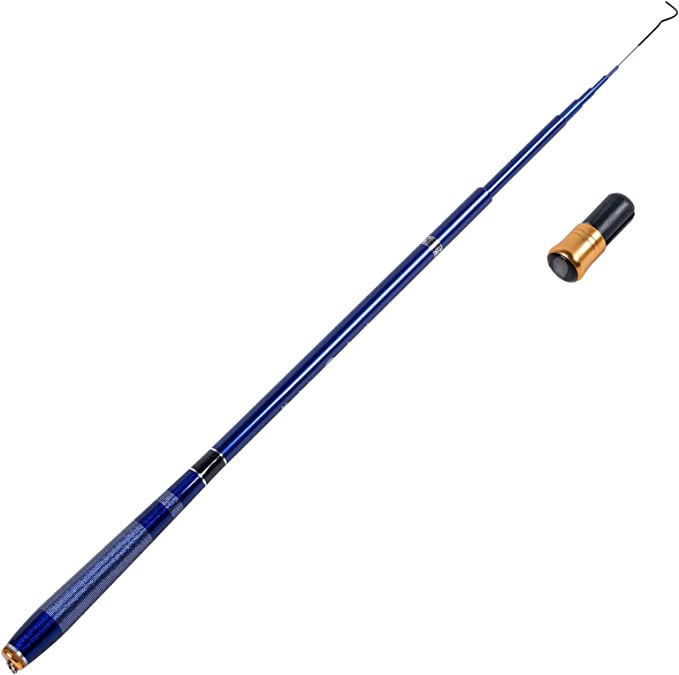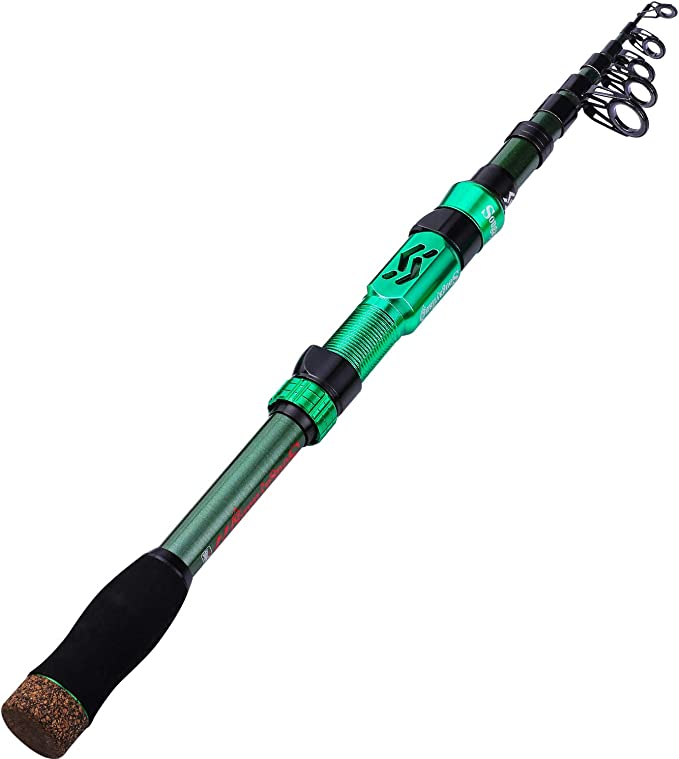The Unfolding Story of the Modern Travel Rod: A Materials Science Perspective
Update on Aug. 1, 2025, 9:47 a.m.
For the angler possessed by wanderlust, a familiar dilemma arises. It’s the quiet negotiation that happens while packing: the yearning for a distant, untouched shoreline versus the sheer awkwardness of traveling with a seven-foot, one-piece wand of graphite. For decades, the solution—a telescopic or “collapsible” rod—was seen as a sorrowful compromise, a tool that traded essential performance for the convenience of fitting in a suitcase. But to hold a modern travel rod, like the KastKing Compass, is to realize that this old narrative is obsolete. This isn’t a story of compromise. It’s the story of a revolution fought and won in the quiet laboratories of materials science.
The Ancestors: A Brief History from Bamboo to Fiberglass
To appreciate the genius of a modern travel rod, we must first understand its lineage. Early rods were elegant but limited tools carved from bamboo, hickory, or other woods. They had character and charm, but they were heavy, sensitive to the elements, and their performance was dictated by the whims of nature.
The first great leap forward came in the years following World War II, born from a material perfected for military radomes and aircraft bodies: fiberglass. These new rods were revolutionary. They were immensely durable, almost immune to the rot and warping that plagued their natural predecessors, and they could be mass-produced. For the first time, high-performance fishing tackle was accessible to the average person. Fiberglass became the standard, a testament to toughness. Yet, it had a flaw; its flexibility and weight, while providing strength, dampened the subtle vibrations that signal a fish’s interest. The feel, the sensitivity, was muted.
The Aerospace Connection: Carbon Fiber Changes the Game
The next leap was astronomical, quite literally. In the 1960s and 70s, the aerospace industry, in its quest for lighter and stiffer materials for rockets and jets, poured immense resources into perfecting carbon fiber technology. This material, also known as graphite in the fishing world, was a marvel. It consisted of long, crystalline chains of carbon atoms, making it incredibly stiff for its weight. When engineers learned to align these fibers into a sheet, they created a material with an exceptionally high Young’s Modulus—a scientific measure of stiffness.
It wasn’t long before rod designers realized the potential. A rod blank made from graphite was lighter, thinner, and orders of magnitude more sensitive than one made from fiberglass. For the first time, an angler could feel the texture of the bottom, the gentle tick of a lure against a rock, or the almost imperceptible mouthing of a lure by a cautious bass. This was the birth of the modern sensitive rod. But this incredible performance came with a trade-off. High-modulus graphite, like a shard of obsidian, is inherently brittle. It could snap under a sharp impact or an extreme, awkward bend—a significant risk for a rod designed to be knocked around on adventures.
The Art of the Blend: Deconstructing the Graphite Composite Blank
This brings us to the heart of the modern travel rod: the graphite composite blank. This is not simply graphite and fiberglass mixed together; it is a sophisticated system where each material mitigates the other’s weaknesses. Think of it like reinforced concrete: the concrete itself is strong under compression but weak under tension, while the steel rebar inside is immense in tensile strength. Together, they create a structure far superior to either component alone.
In a composite blank like the one found in the KastKing Compass, the graphite fibers act as the “nervous system.” Their high stiffness transmits vibrations with breathtaking speed and clarity, providing the sensitivity anglers crave. The fiberglass, integrated into the resin matrix that binds the graphite fibers, acts as the “skeleton.” Its flexibility and toughness absorb shock and allow the rod to bend deeply without catastrophic failure. This synergistic design solves the fundamental paradox of rod engineering: it achieves both sensitivity and durability. This is especially vital in a telescopic rod, where each section must be robust enough to handle the stress of travel and angling.
The Path of Least Resistance: The Physics of Line Management
If the blank is the soul of the rod, the guides are its nervous pathways, responsible for managing the fishing line. The choice of materials here is a study in friction management. The Compass rod employs stainless steel frames, a solid and corrosion-resistant choice, but the true science lies in the rings themselves: Titanium Oxide ceramic.
On the Mohs scale of mineral hardness, where a diamond is a 10, common steel is around a 4-5. Ceramics like Titanium Oxide can rate a 7 or higher. This incredible hardness means they are exceptionally resistant to grooving or wear from the fishing line, especially modern, thin braided lines. But more importantly, their surface is incredibly smooth, resulting in a very low coefficient of friction.
This matters for two reasons. First, lower friction means the line flows more freely during a cast, translating directly to increased distance and accuracy. Second, friction generates heat. On a long, powerful run from a big fish, a lesser guide material can heat up enough to damage and weaken the fishing line. The excellent thermal conductivity and low friction of a ceramic ring dissipate this heat efficiently, protecting the crucial link between the angler and the fish.
The Tactile Interface: Engineering the Perfect Grip
The final point of contact, the grip, is where ergonomics meets polymer chemistry. While traditional rods often feature classic cork, a travel rod benefits immensely from a more resilient material: EVA (Ethylene-Vinyl Acetate).
Cork is light and sensitive but is a natural, open-celled material. It can absorb moisture, get slimy, and is prone to chipping and developing voids over time—all undesirable traits for gear meant to be used in rugged conditions. EVA, however, is a man-made closed-cell foam. Its polymer structure means it does not absorb water, providing a secure grip even when wet. It is far more durable and resistant to dings, UV degradation, and compression than cork. By choosing EVA for the fighting butt and grips, designers make a conscious engineering choice for longevity and reliability in the diverse environments a travel angler will encounter.
The Unfolded Potential
The modern telescopic fishing rod is far more than a convenient gadget. It is a pocket-sized testament to a century of material innovation. It stands on the shoulders of fiberglass pioneers and aerospace engineers, embodying a philosophy of intelligent compromise and synergistic design. From the composite blank that blends sensitivity with strength, to the ceramic guides that master friction, to the polymer grips that promise durability, every component is a deliberate choice.
To unfold a rod like the KastKing Compass by a remote alpine lake is to unfold a story of science. It’s the realization that the freedom to explore, to cast a line wherever your journey takes you, is not a gift of compromise, but a potential unlocked by a deep understanding and application of the very materials that shape our world.







































